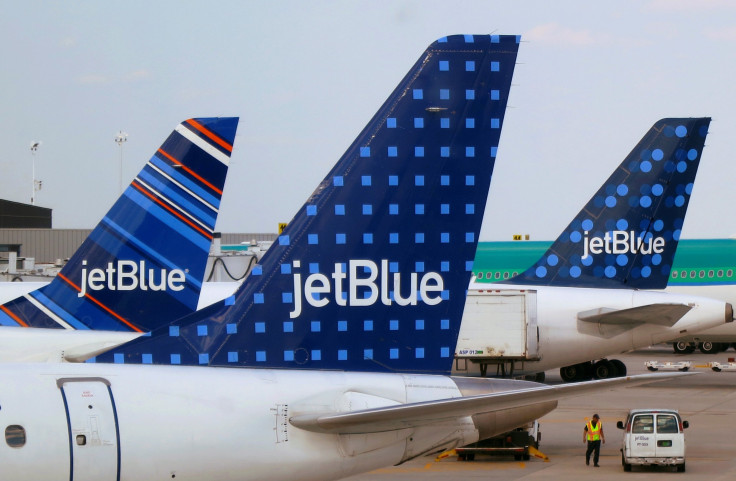2 Of America's Favorite Airlines Are Increasing Fees

The last couple of years have not been kind to JetBlue Airways (NASDAQ:JBLU) and Alaska Air Group (NYSE:ALK). Rising fuel prices have pinched profitability across the U.S. airline industry, but due to competitive dynamics and other factors, JetBlue and Alaska have had more trouble offsetting these cost headwinds than some other carriers.
This article originally appeared in the Motley Fool.
Both airlines have tried to get profitability back on track through a combination of cost discipline and tactical capacity adjustments. However, it hasn't been enough. As a result, JetBlue and Alaska have both decided to increase various fees to boost their ancillary revenue and counter the weak fare environment.
High customer satisfaction doesn't always mean high profits
JetBlue and Alaska Airlines regularly rank as two of the top airlines in the U.S. for customer satisfaction. While Southwest Airlines (NYSE:LUV) has been the highest-rated airline in the annual J.D. Power North America Airline Satisfaction Study for two years running -- following JetBlue's 12-year reign at the top -- JetBlue remains a close second. Alaska Air routinely takes the No. 3 spot. Meanwhile, JetBlue still has the highest-rated loyalty program in the country, followed by Southwest and Alaska.
But while customers love all three low-fare airlines, that hasn't translated to equivalent financial results lately.
As recently as 2016, Alaska Air and JetBlue were among the most profitable airlines in the U.S. JetBlue's profit margin was 11.4%, right in line with Southwest Airlines' 11.6% adjusted margin. Alaska Air's adjusted profit margin was even higher, at 15.4%. By contrast, while analysts project that Southwest's adjusted earnings per share will reach $4.16 this year -- up from $3.75 in 2016 -- analysts expect adjusted EPS to fall from $7.32 to $4.16 for Alaska Air and from $2.22 to $1.49 for JetBlue over the same period.
The sharp EPS declines for Alaska and JetBlue are even more notable given that they are getting big windfalls from tax reform this year. With fuel costs rising and profitability plunging, both carriers' management teams are highly motivated to find new sources of revenue. That's leading them to rethink their fee policies in an effort to boost non-ticket revenue.
Policies are becoming less customer-friendly
In April, Alaska Airlines announced that it would make several policy changes in an effort to generate $150 million of incremental revenue annually. Most notably, it will launch "Saver" fares in late 2018, its version of the basic economy fares adopted by the legacy carriers in recent years. Customers buying Saver tickets will only be able to select seats at the back of the plane, they won't be eligible for any flight changes or upgrades, and they will board last.
Additionally, Alaska Airlines has done away with its policy of allowing free flight changes up until 60 days before departure. Flight changes will cost $125 in most cases, regardless of when they are made. The fee for same-day confirmed changes has doubled to $50. Alaska also has started charging extra for exit-row seats and has adjusted its frequent-flyer award chart.
During JetBlue's second-quarter earnings call, management hinted that it, too, was looking to raise fees. Sure enough, JetBlue will increase a variety of fees at the end of this month, according to The Points Guy.
First and second bag fees will increase by $5 (for fares that don't include a checked bag allowance). The fees for a third bag, oversized bags, surfboards, and other bulky equipment will be increased by $50. The pet fee will rise to $125 from $100. Finally, JetBlue will raise its change/cancellation fee for vacation packages and for pricier tickets to $200.
There's no middle ground on fees
Southwest Airlines has had considerable success marketing itself as an airline that doesn't nickel-and-dime customers. Every fare comes with two free checked bags and can be changed or canceled for free until 10 minutes before departure.
These customer-friendly policies cause Southwest Airlines to miss out on some ancillary revenue opportunities, but they have helped the carrier develop a large and growing following of loyal customers. The no-hidden-fee policy boosts ticket revenue by enabling Southwest to get more than its fair share of bookings.
Alaska Airlines and JetBlue have occupied a middle ground between Southwest and the rest of the pack in terms of fees. All JetBlue fares included a free checked bag until 2015. Meanwhile, Alaska Airlines allowed free flight changes up until the 60-day mark. And JetBlue is still the only U.S. carrier to offer free high-speed Wi-Fi on every flight.
However, these carriers appear to realize that customers haven't been giving them much credit for having lower fees and friendlier policies than the legacy carriers. That isn't very surprising. It's hard to build a marketing campaign around the concept of "bag fees are a little lower" or "no change fees if you let us know really far in advance." Southwest has seized the moral -- and marketing -- high ground with its "bags fly free" and "no change fees" mantras.
Thus, the best strategy for Alaska Airlines and JetBlue Airways is to boost their ancillary revenue so that they can at least afford to keep base fares low. That's exactly what they're doing. But it means that these popular airlines may seem a little less customer-friendly going forward.
Adam Levine-Weinberg owns shares of Alaska Air Group, JetBlue Airways, and Southwest Airlines and is long January 2019 $10 calls on JetBlue Airways. The Motley Fool recommends Alaska Air Group, JetBlue Airways, and Southwest Airlines. The Motley Fool has a disclosure policy.





















